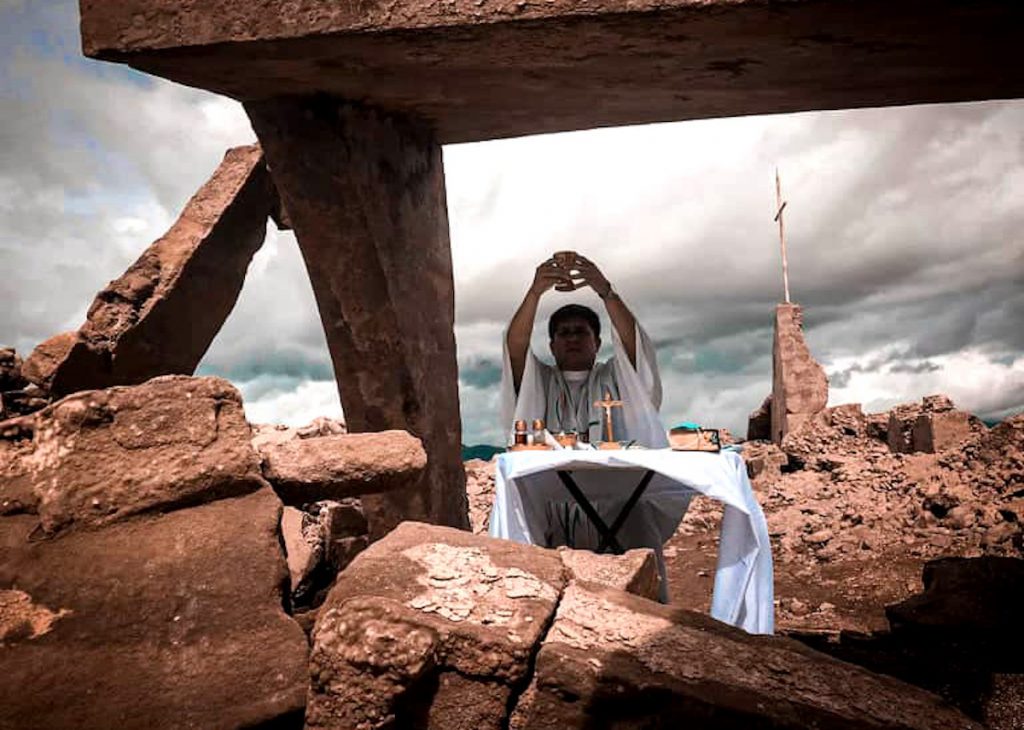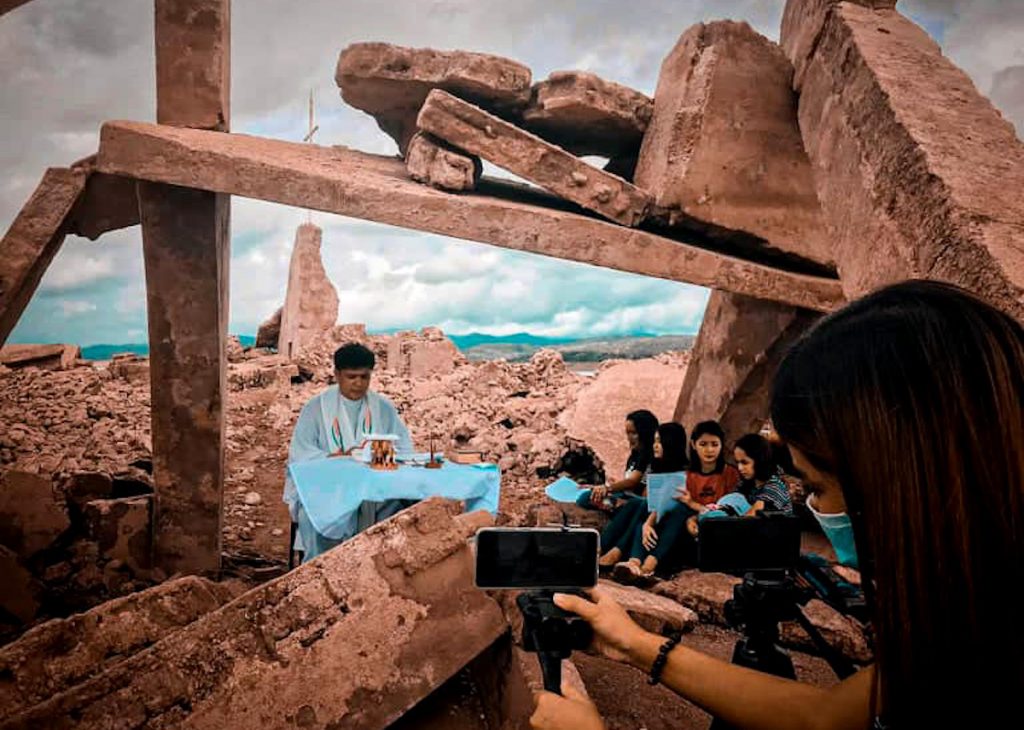A Filipino missionary priest is getting the attention of netizens for celebrating Mass, which he broadcasts online, in the middle of unlikely places.
“People are stuck in their homes during these terrible times,” noted Father Arnold Abelardo. He said he wanted to offer hope by showing those who celebrate Mass with him the beauty of nature.
“I want them to see nature, not virtual backgrounds but something they can breathe,” said the Claretian missionary.
That’s why in the early morning, the priest would usually drag his social communications team to the garden for the Mass.
In the afternoon, he would go to the rooftop and make the iconic Mount Arayat in central Luzon, where is he based, as background for the celebration.
Recently, Father Arnold went a little bit farther and celebrated Mass in a sunken town that recently emerged from the waters in the province of Nueva Ecija.
The town of Pantabangan was abandoned in the 1970s when floodwater from the newly-built dam submerged the town and its surroundings.
Former president Ferdinand Marcos, who was known for building “development projects,” ordered about 3,000 families to leave their homes to give way to the construction of a dam.
Residents fled to higher grounds, leaving properties and homes, including an 18th-century church whose belfry later stood out above the water.

The Pantabangan Dam, the third largest dam in Southeast Asia, provides water to about 250,000 farmers in the province of Nueva Ecija alone.
Because of the water from Pantabangan, the province became the “rice granary of the Philippines” with a rice production of up to 1.9 million metric tons every year.
It is also the only dam in the country that powers three hydroelectric plants that generate 320 megawatts of electricity.
“I grew up hearing about the story of ‘the living sacrifice,’” said Roberto Agdipa, the mayor of the relocated Pantabangan town.
“It will always be a reminder of how people sacrificed the certainties of their lives for the greater good,” he told LiCAS.news in an interview.
The old St. Andrew the Apostle Parish Church, which was built during the Spanish colonial period by Augustinian missionaries, was one of those “sacrificed.”
The eight-hectare dam that measures 107 meters high, 1,615 meters long and 535 meters wide and with the capacity to carry 2.3 trillion liters of water was finished in just a year of construction.
On July 27, after almost 50 years, the town resurfaced from its watery grave, bringing its drowned story out for Filipinos to hear.
Connecting with history
Upon hearing about the news of the “resurrected” town, Father Arnold immediately gathered his team and drove to Pantabangan.
With the permission of the mayor, the group went up the mountain and down to the man-made lake.
“The moment we stepped foot on the ruins, I heard myself sigh in awe,” said the priest. “I spent time in silence to pay my respects to a place that for many years was drowned,” he said.
He said that more than the excitement, “I am more after the sacredness and the experience of connecting oneself to what is sacred, to history,” said Father Arnold.
“It is sacred because it is rooted in the ordinariness of life of the people. It is not just stones, it is an area wherein once upon a time, there was a community living in it,” he said.

The priest set up a makeshift altar and celebrated Mass “to honor the sacred place” and “to give thanks to God for the sacrifices of the people” who gave up their usual lives to help the bigger community.
Prior to the town’s “resurrection” this year, the cross of the St. Andrew the Apostle church already showed up during the drought in 2014.
“But it has always been just the cross, unlike this time,” said Father Arnold.
This time, the old cemetery, the monument of the national hero, and parts of the old school reappeared.
The cross, which is often seen peeking out during dry summers when the water is low enough, is actually not the original cross of the church. It’s the cross left by residents to mark the location of their church.
The bells that were saved from the old church are now displayed at the new St. Andrews Parish.
“The story reflects the Filipino faith that is harnessed in the community, the Church,” said Father Arnold, adding that the Church is not just the physical structure.
“It’s actually not the ruins that inspired me,” he said, “but the idea that once there are people who lived there, their expressions of faith, sacrifice, and hope that will never be lost.”







